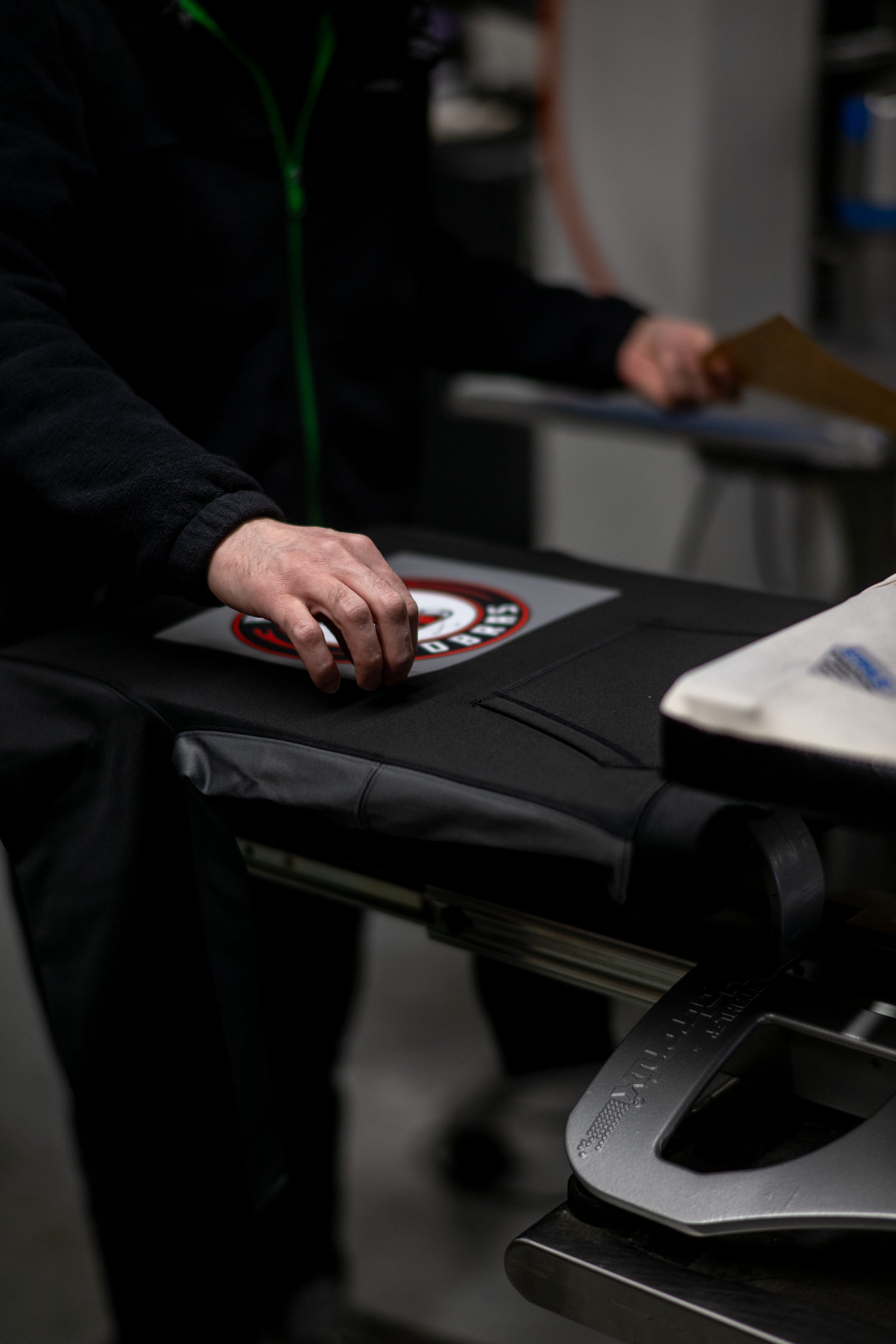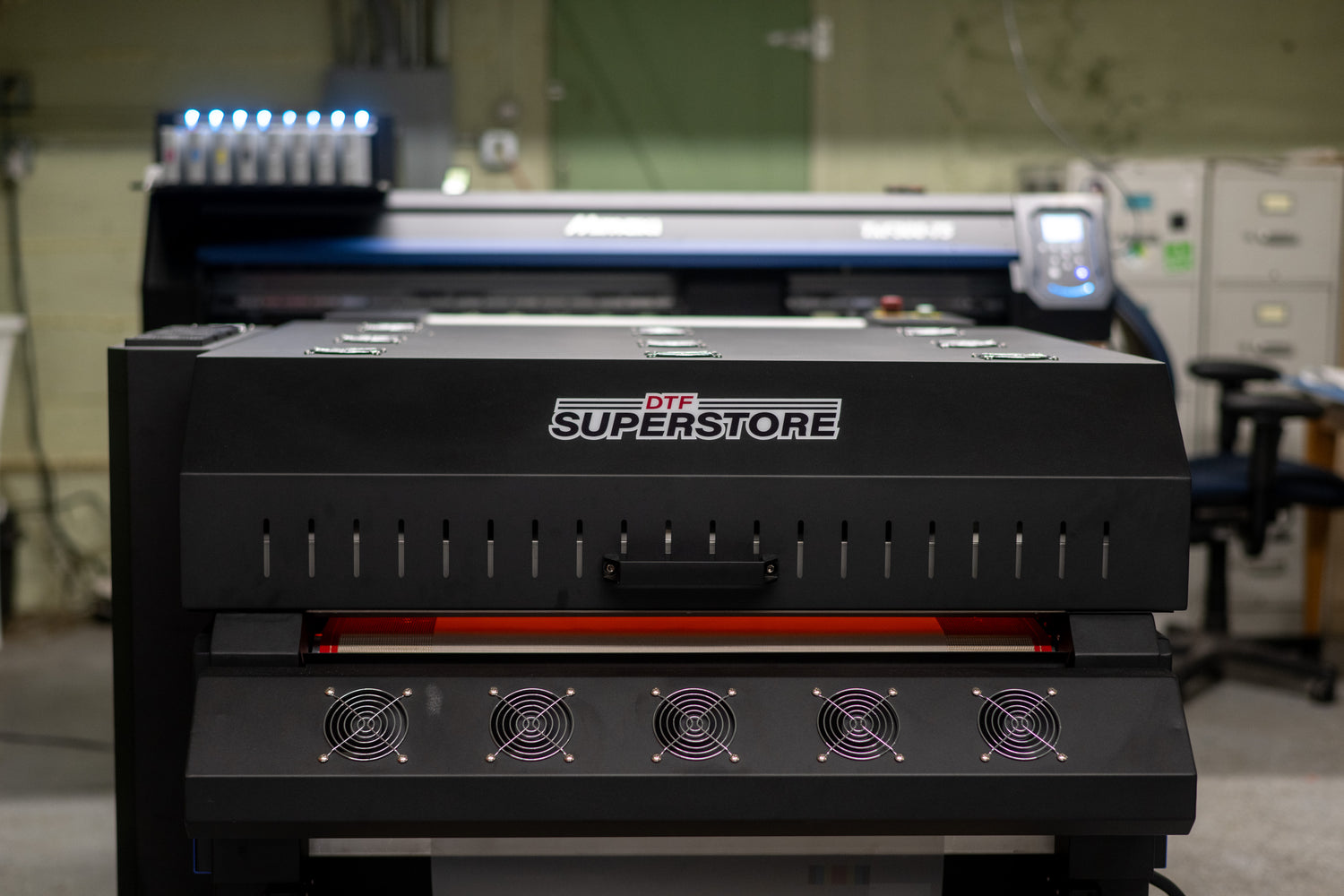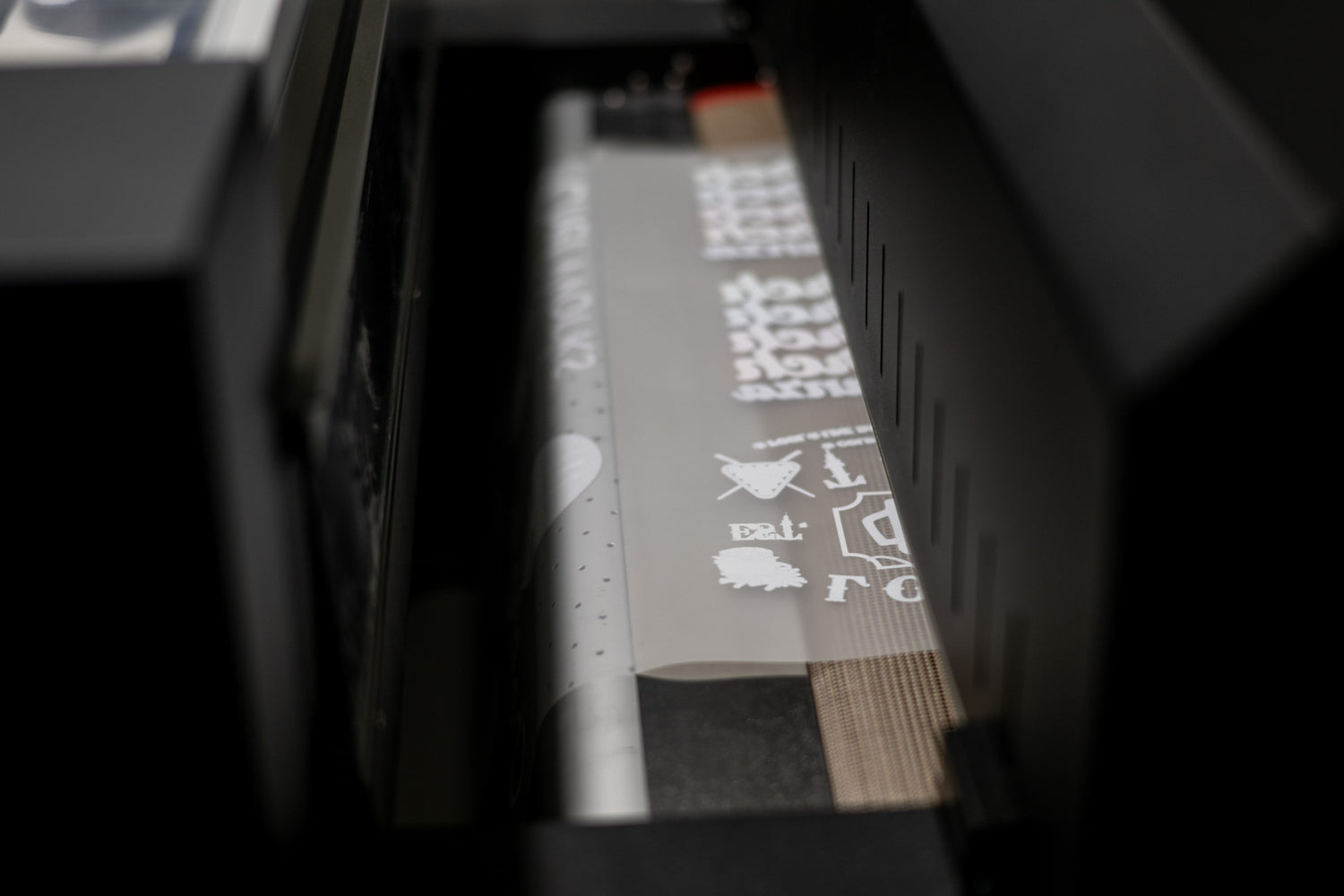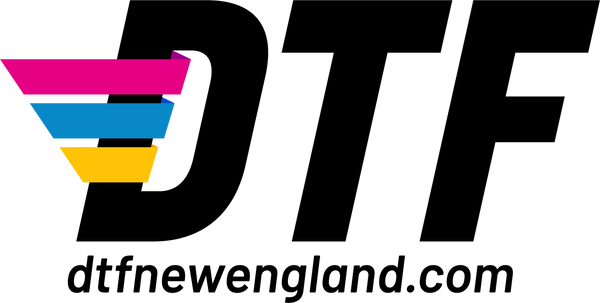
Direct To Film
DTF printing uses inkjet printers to print aqueous pigmented inks onto a PET (polyethylene terephthalate) film. PET film is used because of its dimensional stability when heated and its non-toxic nature. Images are printed in a mirrored fashion such that the image is “face down” onto the PET film.
The last color to be printed is typically white which is slow drying, leaving it tacky for the acceptance of a powdered adhesive (a hot melt powder made of polyurethane resin). Once the powder has been applied by a process of cascading the powder over the tacky print and shaking/agitating the film to remove any unbonded powder, the film then passes through a heat tunnel that melts the adhesive to bond it with the ink. Leaving the tunnel, the print and adhesive cool and are ready to be applied.
The application process is quite simple:
- 1. Cut the DTF transfer from the roll, set heat press to 260’ F - 290’ F.
- 2. Pre-press for 5-10 seconds to get the moisture out
- 3. Press with film in place for 10 seconds.
- 4. Peel the film while it is warm.
- 5. We recommend after removing the PET film, return the garment to the heat press and put a piece of craft paper or another curing sheet over the image and press for an additional 10 seconds to ensure the set of the transfer into the garment.
Allow 24 hours before washing the garment.
FAQS
What is a DTF Printer?
As the name suggests, a direct-to-film printer allows you to print a design on a film and transfer it directly to the intended surface, such as fabric. The key reason why the printer DTF is gaining prominence is the freedom it gives you to choose almost any surface for printing.
The DTF printer technology can allow you to print easily on cotton, polyester, synthetic, or silk without any trouble. Plus, DTF printers can work on both dark and white fabric without any need to press on expensive A & B paper like .
The Direct to Film Printer Films
A DTF printer uses PET films as these are different from the ones used in screen printing. PET films have a thickness of approximately 0.75mm, making them better-transferring characteristics. These films are also known as DTF Transfer Films in the market. There are two classifications of PET Films based on temperature. These are cold-peel type films and hot-peel type films.
Hot-Melt Adhesive Powder
The Direct to Film printing powder is a white granular product and works as an adhesive material. This helps bind the colored pigments in your printer to the surface you are printing on. However, there are several grades of this STF hot-melt specified in microns.
DTF Printer Inks
The inks used in Printer DTF are unique pigments designed in Cyan, Yellow, Magenta, White and Black colors. The white ink forms the foundation of your print, while the colored pigment prints the design on the film.
Heat Press Machine
This piece of equipment helps transfer the printed images on your film onto the desired surface or fabric. You can also use this machine to melt powder on your DTF film.

PROS
- Apparel does not require any pretreatment
- Unlimited colors
- No minimums
- You can use it on almost any material or fabric
- The process is less tedious and quicker than other printing methods such as DTG.
- Does not require any weeding or cutting like vinyl
- No set up fees (or screen fees)

CONS
- The printed area is slightly more noticeable than subliminal printing and not as soft
- The color vibrancy is somewhat lower than screen printing
- Pressing requires a cold peel which takes a little longer
- Not great for high quantity, low color jobs due to price
